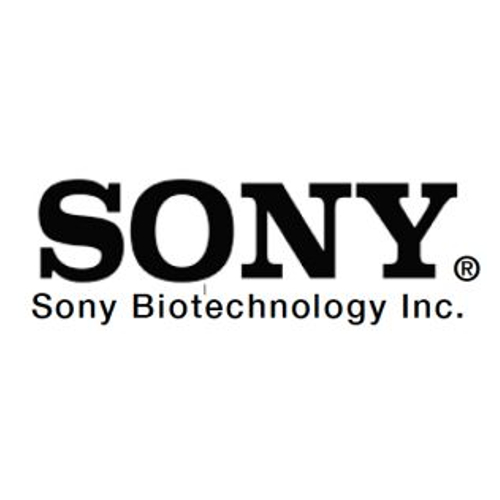TCR beta Monoclonal / Brilliant Violet 510 / H57-597
Product Details
| Description | Brilliant Violet 510 anti-mouse TCR beta chain | |
|---|---|---|
| Conjugate | Brilliant Violet 510 | |
| Clone | H57-597 | |
| Target Species | Mouse | |
| Applications | FC | |
| Supplier | Sony | |
| Catalog # | Sign in to view product details, citations, and spectra | |
| Size | ||
| Price | ||
| Antigen | ||
| Host | ||
| Isotype |
About TCR beta
T cell receptors recognize foreign antigens which have been processed as small peptides and bound to major histocompatibility complex (MHC) molecules at the surface of antigen presenting cells (APC). Each T cell receptor is a dimer consisting of one alpha and one beta chain or one delta and one gamma chain. In a single cell, the T cell receptor loci are rearranged and expressed in the order delta, gamma, beta, and alpha. If both delta and gamma rearrangements produce functional chains, the cell expresses delta and gamma. If not, the cell proceeds to rearrange the beta and alpha loci. This region represents the germline organization of the T cell receptor beta locus. The beta locus includes V (variable), J (joining), diversity (D), and C (constant) segments. During T cell development, the beta chain is synthesized by a recombination event at the DNA level joining a D segment with a J segment; a V segment is then joined to the D-J gene. The C segment is later joined by splicing at the RNA level. Recombination of many different V segments with several J segments provides a wide range of antigen recognition. Additional diversity is attained by junctional diversity, resulting from the random additional of nucleotides by terminal deoxynucleotidyltransferase. Several V segments and one J segment of the beta locus are known to be incapable of encoding a protein and are considered pseudogenes. The beta locus also includes eight trypsinogen genes, three of which encode functional proteins and five of which are pseudogenes. Chromosomal abnormalities involving the T-cell receptor beta locus have been associated with T-cell lymphomas. [provided by RefSeq, Jul 2008]
T cell receptors recognize foreign antigens which have been processed as small peptides and bound to major histocompatibility complex (MHC) molecules at the surface of antigen presenting cells (APC). Each T cell receptor is a dimer consisting of one alpha and one beta chain or one delta and one gamma chain. In a single cell, the T cell receptor loci are rearranged and expressed in the order delta, gamma, beta, and alpha. If both delta and gamma rearrangements produce functional chains, the cell expresses delta and gamma. If not, the cell proceeds to rearrange the beta and alpha loci. This region represents the germline organization of the T cell receptor beta locus. The beta locus includes V (variable), J (joining), diversity (D), and C (constant) segments. During T cell development, the beta chain is synthesized by a recombination event at the DNA level joining a D segment with a J segment; a V segment is then joined to the D-J gene. The C segment is later joined by splicing at the RNA level. Recombination of many different V segments with several J segments provides a wide range of antigen recognition. Additional diversity is attained by junctional diversity, resulting from the random additional of nucleotides by terminal deoxynucleotidyltransferase. Several V segments and one J segment of the beta locus are known to be incapable of encoding a protein and are considered pseudogenes. The beta locus also includes eight trypsinogen genes, three of which encode functional proteins and five of which are pseudogenes. Chromosomal abnormalities involving the T-cell receptor beta locus have been associated with T-cell lymphomas. [provided by RefSeq, Jul 2008]
About Brilliant Violet 510
Brilliant™ Violet 510 (BV510) is a green-emitting non-tandem polymer fluorophore that can be excited by the 405 nm Violet laser and collected using a 510/50 bandpass filter. BV510 has an excitation peak at 405 nm and an emission peak at 510 nm, and is similar to StarBright Violet 515 (Bio-Rad). BV510 is most often used in flow cytometry due to its improved signal-to-noise over alternatives like V500 and AmCyan. This dye is part of the Brilliant™ Violet dye line. BV510 and BV480 are the only dyes in the Brilliant™ Violet dye family that are not tandem fluorophores based off the BV421 polymer core, but they have nearly the same maximum excitation.
Brilliant™ Violet 510 (BV510) is a green-emitting non-tandem polymer fluorophore that can be excited by the 405 nm Violet laser and collected using a 510/50 bandpass filter. BV510 has an excitation peak at 405 nm and an emission peak at 510 nm, and is similar to StarBright Violet 515 (Bio-Rad). BV510 is most often used in flow cytometry due to its improved signal-to-noise over alternatives like V500 and AmCyan. This dye is part of the Brilliant™ Violet dye line. BV510 and BV480 are the only dyes in the Brilliant™ Violet dye family that are not tandem fluorophores based off the BV421 polymer core, but they have nearly the same maximum excitation.
Experiment Design Tools
Panel Builders
Looking to design a Microscopy or Flow Cytometry experiment?
Validation References
Reviews & Ratings
| Reviews |
|---|
Looking for more options?
472 TCR beta antibodies from over 27 suppliers available with over 75 conjugates.





